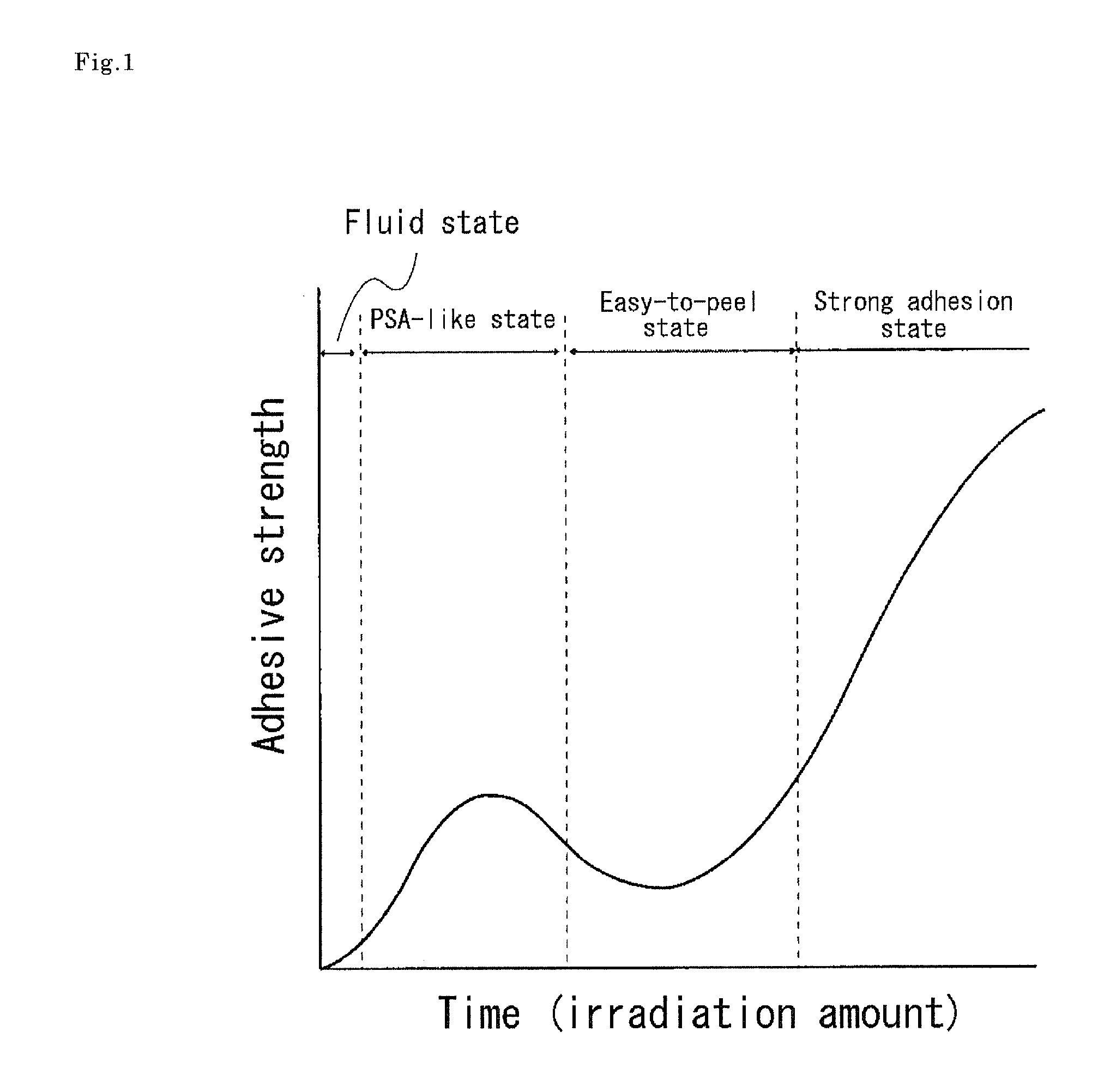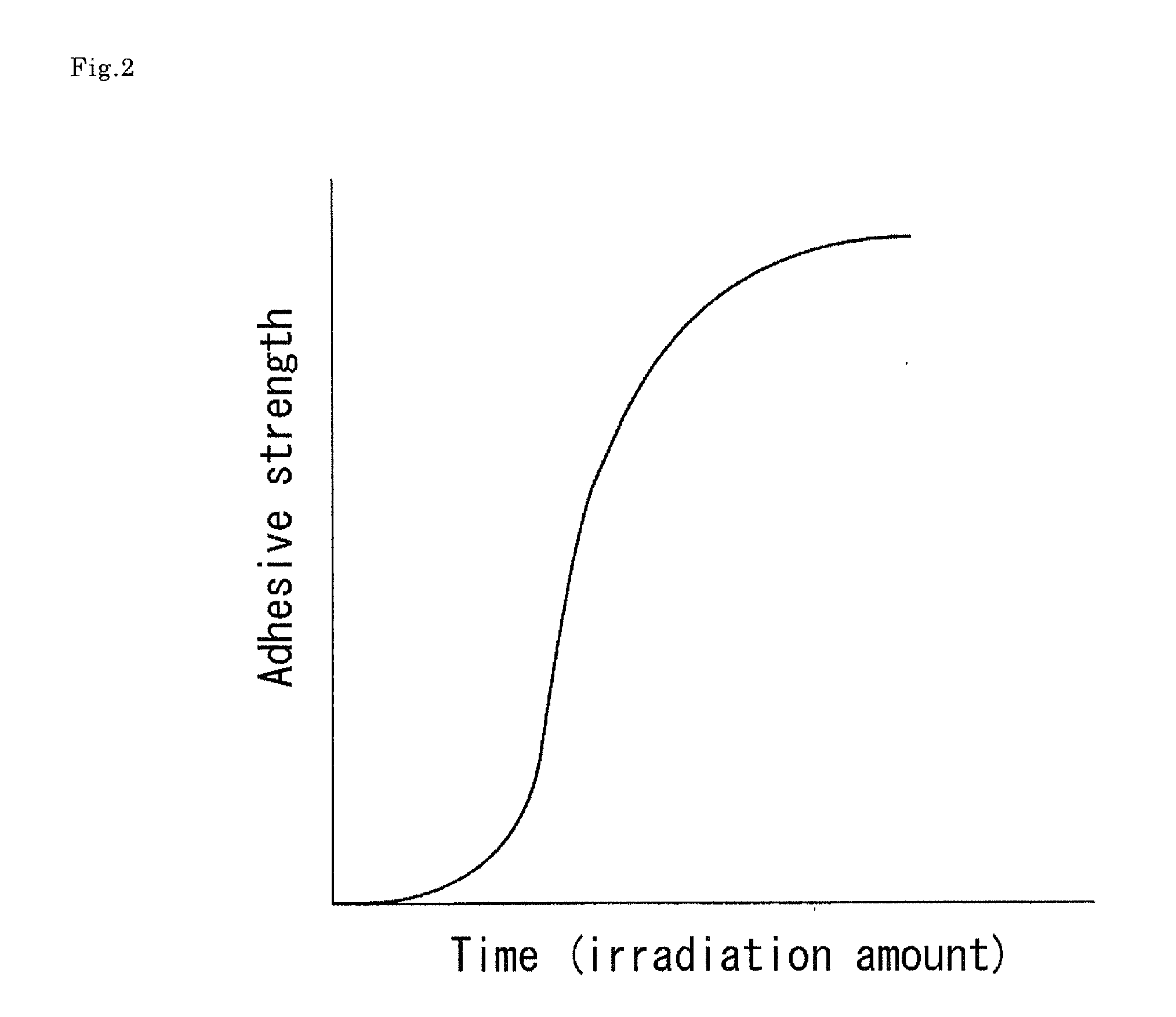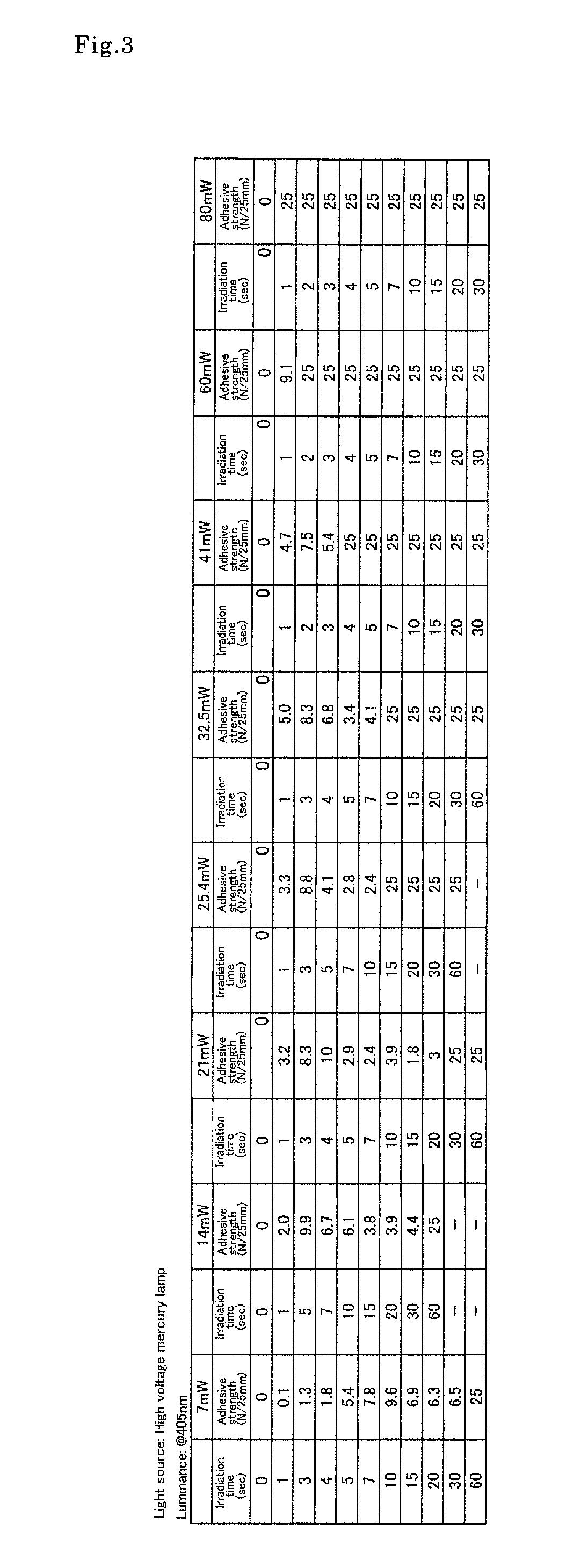Adhesive composition
- Summary
- Abstract
- Description
- Claims
- Application Information
AI Technical Summary
Benefits of technology
Problems solved by technology
Method used
Image
Examples
example 1
[0126]One part of a photo-polymerization initiator (Irgacure819 from Ciba Japan K.K.) was added to 100 parts of N-(2-hydroxyethyl)acrylamide monomer (from Kohjin Co., Ltd.) and dissolved to prepare adhesive composition. To accelerate rate of dissolution, ultrasonic wave was applied while heating at 50° C. One milliliter of the adhesive composition was dropped onto a plate glass with a dropping pipette, a polarizing film (VEGQ5724DU from Nitto Denko Corporation) was overlapped thereon, and the polarizing film was pressed with a hand-roller to laminate the polarizing film and the plate glass. The thickness of the adhesive composition was adjusted to 10μm. Glass transition temperature (Tg) of the adhesive composition was 98° C. The size of the plate glass was 150×50 mm and that of the polarizing film was 140×40 mm.
[0127]Since TAC which an ultraviolet absorber is added thereto is used for a protection film of the polarizing film, light with wavelength of 380 nm or less hardly transmits ...
example 2
Measurement of Critical Irradiation Intensity
[0135]A half part of a photo-polymerization initiator (Irgacure819 from Ciba Japan K.K.) was added to 100 parts of N-(2-hydroxyethyl)acrylamide monomer (from Kohjin Co., Ltd.) and dissolved to prepare adhesive composition. To accelerate rate of dissolution, ultrasonic wave was applied while heating at 50° C. One milliliter of the adhesive composition was dropped onto a plate glass with a dropping pipette, a polarizing film (VEGQ5724DU from Nitto Denko Corporation) cut in sheets having a width of 25 mm was laminated therewith. The thickness of the adhesive composition was adjusted to 10 μm. The plate glass laminated with the polarizing film was placed in an oven heated to 40° C., and light was irradiated from the polarizing film side with an ultraviolet irradiator (UBX0801-01 from Eye Graphics Co., Ltd., a high voltage mercury lamp with output of 8 kW). For preventing the temperature of the polarizing film or the plate glass overheated tha...
example 3
Control of Adhesive Strength and State by Irradiation Intensity of Electromagnetic Wave or Particle Beam
[0138]For the same adhesive strength composition in Example 1, change of state of the adhesive composition depending on the irradiation time when varying the irradiation intensity was observed under the same conditions as Example 1 except the irradiation intensity of light. The irradiation intensity at the wavelength of 405 nm was varied in a range from 1.5 to 35 mW / cm2. The result is shown in FIG. 5, where a cross (x) shows that the adhesive composition was at fluid state, a triangle (Δ) shows that the adhesive composition was at PSA-like state, a circle (◯) shows that the adhesive composition was at easy-to-peel state, and a double circle (⊚) shows that the adhesive composition was at strong adhesion state. From FIG. 5, it is understood that time for the state of the adhesive composition changing to the PSA-like state, time to the easy-to-peel state and time to the strong adhesi...
PUM
| Property | Measurement | Unit |
|---|---|---|
| Angle | aaaaa | aaaaa |
| Temperature | aaaaa | aaaaa |
| Pressure | aaaaa | aaaaa |
Abstract
Description
Claims
Application Information
 Login to View More
Login to View More - R&D
- Intellectual Property
- Life Sciences
- Materials
- Tech Scout
- Unparalleled Data Quality
- Higher Quality Content
- 60% Fewer Hallucinations
Browse by: Latest US Patents, China's latest patents, Technical Efficacy Thesaurus, Application Domain, Technology Topic, Popular Technical Reports.
© 2025 PatSnap. All rights reserved.Legal|Privacy policy|Modern Slavery Act Transparency Statement|Sitemap|About US| Contact US: help@patsnap.com



